

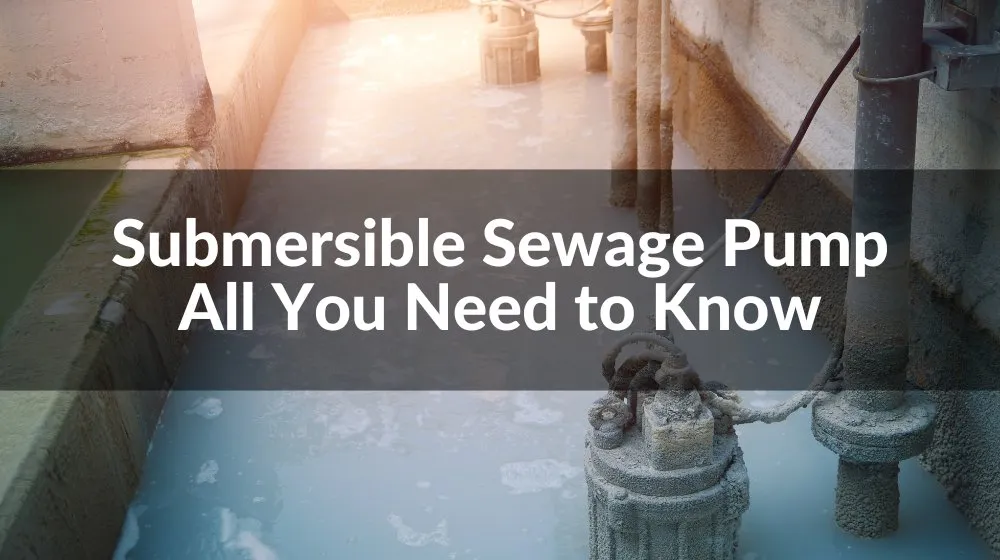
As a vital industrial facility, it is important to know everything you need to know about submersible sewage pumps.
We'll tell you what these pumps are, what they're about, their core components, and more. After reading this guide, you'll have a solid understanding of the inner workings of submersible sump pumps, their impact on the environment, and the future of this fundamental technology.
The Importance of Submersible Sewage Pumps in Modern Society
Submersible Sewage Pump: Core Components and Their Functions
A submersible sewage pump, as the name suggests, is a type of pump designed to handle and move sewage waste. It operates underwater, or 'submersed' in the fluid it is pumping, hence the term 'submersible'. This design is crucial in its application because it allows the pump to function in conditions where many other pumps cannot.
The main components of a submersible sewage pump include the motor, impeller, and the pump casing. The motor is hermetically sealed and close-coupled to the pump body. It's built to operate while completely submerged in the sewage, and it drives the impeller, which pushes the sewage through the pump and into the discharge pipe.
There are several types of submersible sewage pumps, including grinder pumps, solid handling pumps, and vortex pumps, each suited to different types of sewage and conditions. These pumps are commonly found in applications such as residential, commercial, and municipal wastewater treatment plants, septic tank systems, and industrial sites where the handling of waste fluids is required.
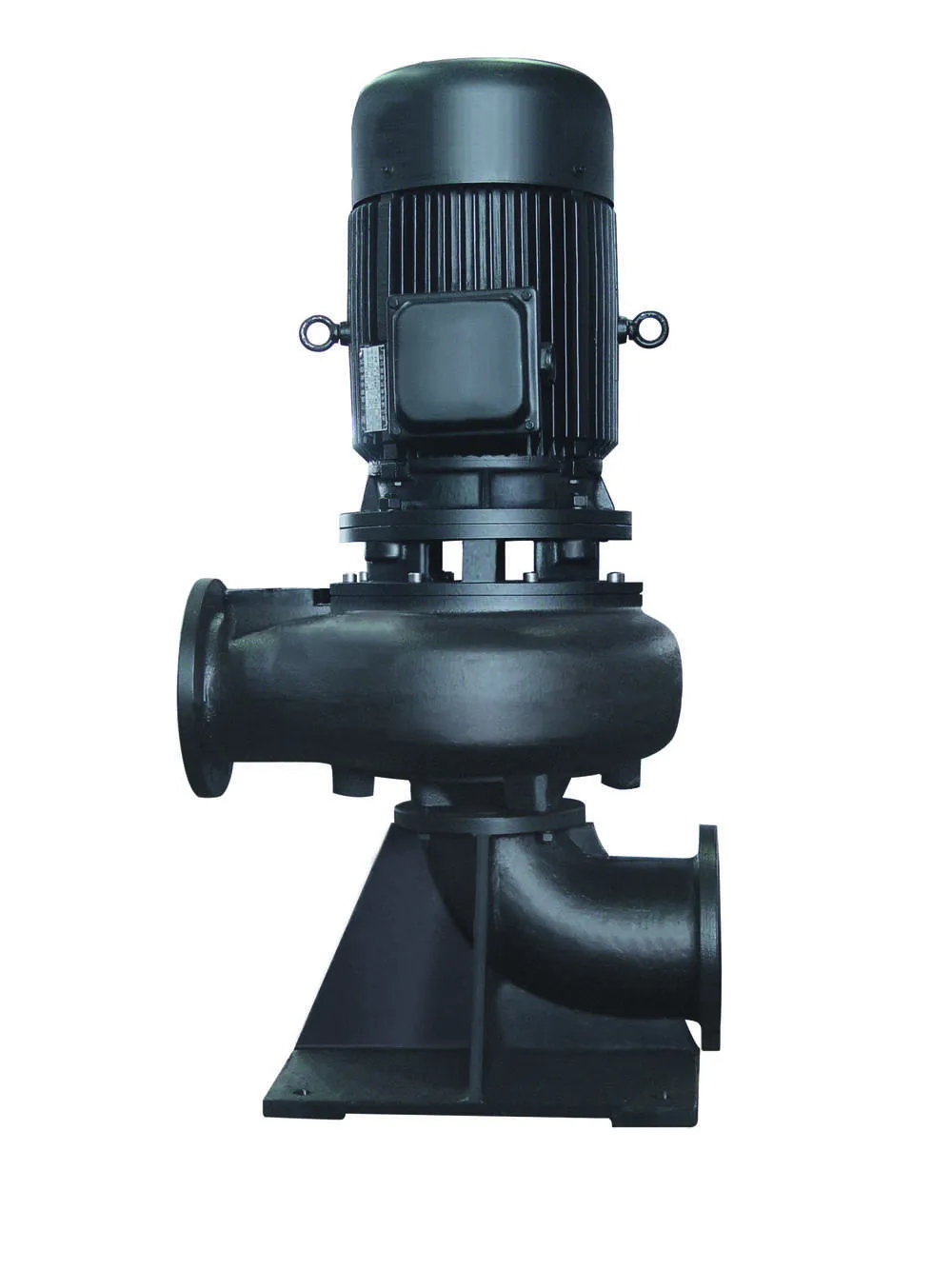
Submersible sewage pumps play a pivotal role in our modern society, often going unnoticed but providing essential services that maintain public health, sanitation, and environmental safety.
Firstly, submersible sewage pumps are integral to waste management and sanitation systems. Whether in small towns or large cities, these pumps ensure that sewage waste is efficiently and effectively moved from homes, offices, and public buildings to wastewater treatment facilities. Without these pumps, we would be left with unmanageable waste accumulation, leading to significant public health issues.
Secondly, these pumps help protect the environment. By reliably transporting sewage waste to treatment facilities, submersible sewage pumps help prevent the release of untreated waste into the environment. This not only protects our water sources but also contributes to the preservation of ecosystems and biodiversity.
Furthermore, in areas prone to flooding, submersible sewage pumps can be used to quickly and efficiently remove water from flood-prone areas, helping to mitigate the impact of flooding on communities and infrastructure.
In the industrial sector, these pumps are essential for waste management and process fluid transportation. They are used in various industries, including mining, construction, and manufacturing, to handle waste products and transport fluids needed for various processes.
A submersible sewage pump is a marvel of engineering, made up of several key components that each play a crucial role in its operation. Here, we break down these core components and their functions.
1. Motor: The motor is the heart of the pump. It is typically a robust, electrically powered component that is hermetically sealed to prevent water ingress, which could cause a short circuit. The motor provides the power needed to drive the impeller and pump the sewage.
2. Impeller: The impeller is a rotating component driven by the motor. It has vanes that draw in the sewage and propel it outwards by centrifugal force, pushing it through the pump and into the discharge pipe.
3. Pump Casing (Housing): This is the shell that houses the impeller and motor. It is typically made of durable materials like cast iron or stainless steel to withstand the harsh conditions inside the sewage tank. The casing also has channels that guide the sewage from the impeller to the discharge pipe.
4. Seal Chamber and Seals: This component prevents sewage from entering the motor compartment. Mechanical seals are used, which create a watertight seal between the motor and the pump casing.
5. Discharge Pipe: This is the pipe through which the sewage leaves the pump. It's designed to handle the pressure of the sewage being forced through it by the pump.
6. Power Cord: This is what connects the pump to the electrical power source. It's designed to be waterproof and durable to ensure reliable operation of the pump.
These components work together to provide a robust and efficient system for managing and transporting sewage.
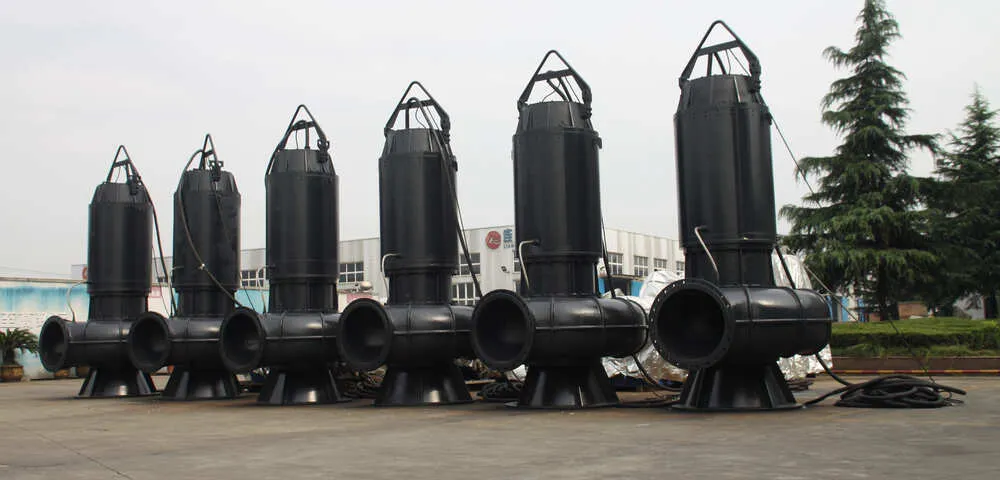
Submersible sewage pumps come with a number of special features that set them apart from other types of pumps. These features are designed to handle the unique challenges presented by sewage waste and submerged operation.
1. Submersible Design: Perhaps the most defining feature, the pump is designed to operate while fully submerged in sewage. This makes it ideal for applications where the pump needs to be placed within the fluid it is pumping, such as sewage pits or sumps.
2. Solids Handling: Submersible sewage pumps are capable of handling solid waste particles found in sewage. This is thanks to their specially designed impellers that can process solids without clogging, a critical feature for any sewage pump.
3. Corrosion Resistance: Given the corrosive nature of sewage, these pumps are made from materials that resist corrosion and degradation, such as stainless steel or cast iron with special coatings.
4. Hermetically Sealed Motors: The motors of these pumps are hermetically sealed to prevent water and sewage from causing electrical failures. This allows the pumps to operate safely and reliably, even when fully submerged.
5. Thermal Overload Protection: Many submersible sewage pumps come with built-in thermal protection to prevent the motor from overheating, which can cause damage and decrease the lifespan of the pump.
6. Automatic Operation: Some models are equipped with float switches that allow for automatic operation. When the sewage level reaches a certain height, the pump automatically turns on. When the level drops, the pump turns off.
_1685609290_WNo_1000d669.webp)
There are several types of submersible sewage pumps, each designed to handle different kinds of sewage and operating conditions. Here are some of the most common types:
1. Grinder Pumps: These pumps are equipped with a grinding mechanism that chops up sewage into a slurry before pumping it. This reduces the risk of clogging and allows for smoother, more efficient pumping. Grinder pumps are ideal for situations where there are larger solid wastes present.
2. Solid Handling Pumps: Also known as non-clog pumps, these are designed to pump sewage containing solids up to a certain size. They have large impellers with wide flow channels to handle solid waste without clogging.
3. Vortex Pumps: These pumps have a unique impeller design that creates a vortex of water to pump sewage. This design reduces the risk of clogging because the impeller doesn't come into direct contact with the sewage. Vortex pumps are suitable for sewage containing larger debris and solids.
4. Effluent Pumps: These pumps are designed to handle greywater or sewage with smaller solid wastes. They are typically used in septic systems or for pumping effluent from a sump to a drain field.
5. Cutter Pumps: Similar to grinder pumps, cutter pumps have a cutting mechanism to reduce the size of solid wastes before pumping. They are used when the sewage contains fibrous materials that need to be cut down to prevent blockages.
Submersible sewage pumps operate in a fascinating yet straightforward manner. They are built to handle tough sewage environments while delivering efficient and reliable performance. Here's a step-by-step breakdown of how they work:
1. Submersion: The pump is installed in the lowest point of the area where sewage collects, such as a septic tank or a sewage pit. Being fully submersible, it can operate while completely submerged in the sewage.
2. Activation: The pump is typically equipped with a float switch that triggers the pump to start operating when the sewage reaches a certain level. Some pumps may also be manually operated.
3. Ingestion: Once activated, the pump's impeller, which is driven by the motor, starts rotating. As it rotates, it draws in the sewage into the pump.
4. Pumping: The impeller's rotation creates centrifugal force, which pushes the sewage outwards and into the pump casing. The casing channels the sewage towards the discharge pipe.
5. Discharge: The sewage is then pumped through the discharge pipe to a sewage treatment facility or a septic system. The pump continues to operate until the sewage level drops to a predetermined point, at which the float switch triggers the pump to stop.
6. Cooling: The submersible design of the pump also helps cool the motor as the surrounding fluid absorbs the heat generated during operation. This helps to prevent overheating and prolong the lifespan of the motor.
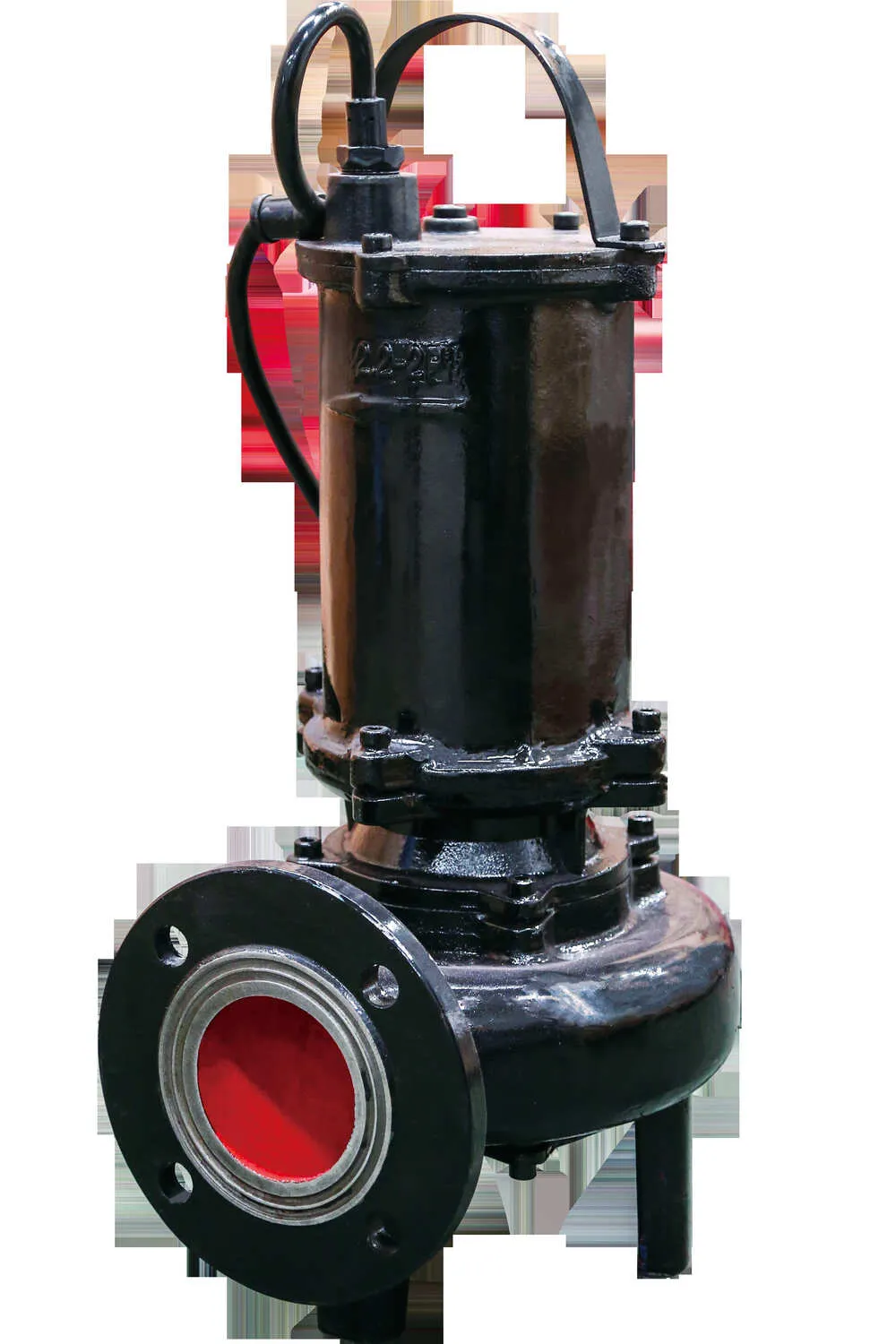
Proper installation and regular maintenance of submersible sewage pumps are essential to ensure their efficient operation and prolong their lifespan. Here's a basic guide to installing and maintaining these pumps:
1. Selecting the Location: The pump should be installed in a suitable location, usually the lowest point in the area where sewage collects. The site should be accessible for maintenance and repair work.
2. Installing the Pump: The pump is typically placed on a solid, level base to avoid tilting or sinking. It's then connected to the discharge pipe that leads to the sewage treatment facility or septic system.
3. Electrical Connection: The pump's power cord is connected to a suitable power source. The electrical installation should comply with local codes and regulations and ideally be carried out by a licensed electrician.
1. Regular Inspection: Regular checks should be performed to ensure the pump is operating correctly. This includes checking the motor's temperature, the condition of the seals, and the functioning of the float switch.
2. Cleaning: Depending on the type of sewage and frequency of use, the pump may need to be cleaned regularly to prevent clogging and build-up of solids. Always follow the manufacturer's guidelines when cleaning the pump.
3. Servicing: Periodic servicing by a professional is recommended. This includes checking the electrical components, lubricating parts where necessary, and replacing worn-out parts.
4. Repair and Replacement: If the pump shows signs of decreased performance or failure, it should be repaired or replaced promptly to avoid bigger issues like sewage overflow or damage to the sewage system.
Selecting the right submersible sewage pump is critical to ensure efficient and reliable sewage management. Here's a buyer's guide to assist you in making an informed decision.
1. Capacity: The pump's capacity or flow rate, typically measured in gallons per minute (GPM), should match the volume of sewage it needs to handle. A pump with a higher capacity is required for larger volumes of sewage.
2. Power: The power of the pump's motor, typically indicated by its horsepower (HP), determines its ability to pump sewage over certain distances and heights. More powerful pumps are needed for longer or steeper discharge pipe runs.
3. Material: The pump's material should be able to resist the corrosive nature of sewage. Pumps made of stainless steel or cast iron with special coatings are typically more durable and longer-lasting.
1. Horsepower (HP): This indicates the power of the motor. A higher horsepower rating means the pump can handle larger volumes of sewage and pump it over greater distances or heights.
2. Gallons per Minute (GPM): This is the pump's flow rate or capacity. It indicates the volume of sewage the pump can move per minute.
3. Maximum Head: This is the maximum height that the pump can lift sewage against gravity. It's important to ensure that the pump's maximum head rating is sufficient for your needs.
When it comes to submersible sewage pumps, certain brands stand out for their quality, innovation, and reliability. One such brand is the Liancheng Group, a leading pump manufacturer in China.
Working with submersible sewage pumps requires careful attention to safety. Understanding potential hazards and implementing safety measures can help prevent accidents and ensure a safe working environment.
1. Electrical Hazards: Submersible pumps are powered by electricity and operate in wet environments, increasing the risk of electric shock. Additionally, improper wiring or faulty electrical connections can lead to fires.
2. Mechanical Hazards: Moving parts like the impeller can cause injuries if the pump is not properly guarded or if maintenance is carried out while the pump is running.
3. Chemical Hazards: Sewage often contains harmful substances that can cause health problems if not handled properly.
4. Confined Spaces: Pump installations in confined spaces like sump pits can pose risks like oxygen deficiency, toxic gases, and difficulty in rescue operations during emergencies.
1. Electrical Safety: Ensure that all electrical connections are properly installed and grounded. Always disconnect the pump from the power source before performing maintenance or inspection.
2. Mechanical Safety: Always switch off and disconnect the pump before carrying out any maintenance work. Ensure that the pump is properly guarded to prevent contact with moving parts.
3. Chemical Safety: Wear appropriate personal protective equipment (PPE) when handling sewage to prevent exposure to harmful substances. This may include gloves, goggles, and protective clothing.
4. Confined Space Safety: Follow confined space safety regulations when installing or maintaining pumps in confined spaces. This includes proper ventilation, monitoring of air quality, and having a rescue plan in place.
5. Regular Maintenance: Regular inspection and maintenance can help detect and correct potential safety issues before they become serious problems.
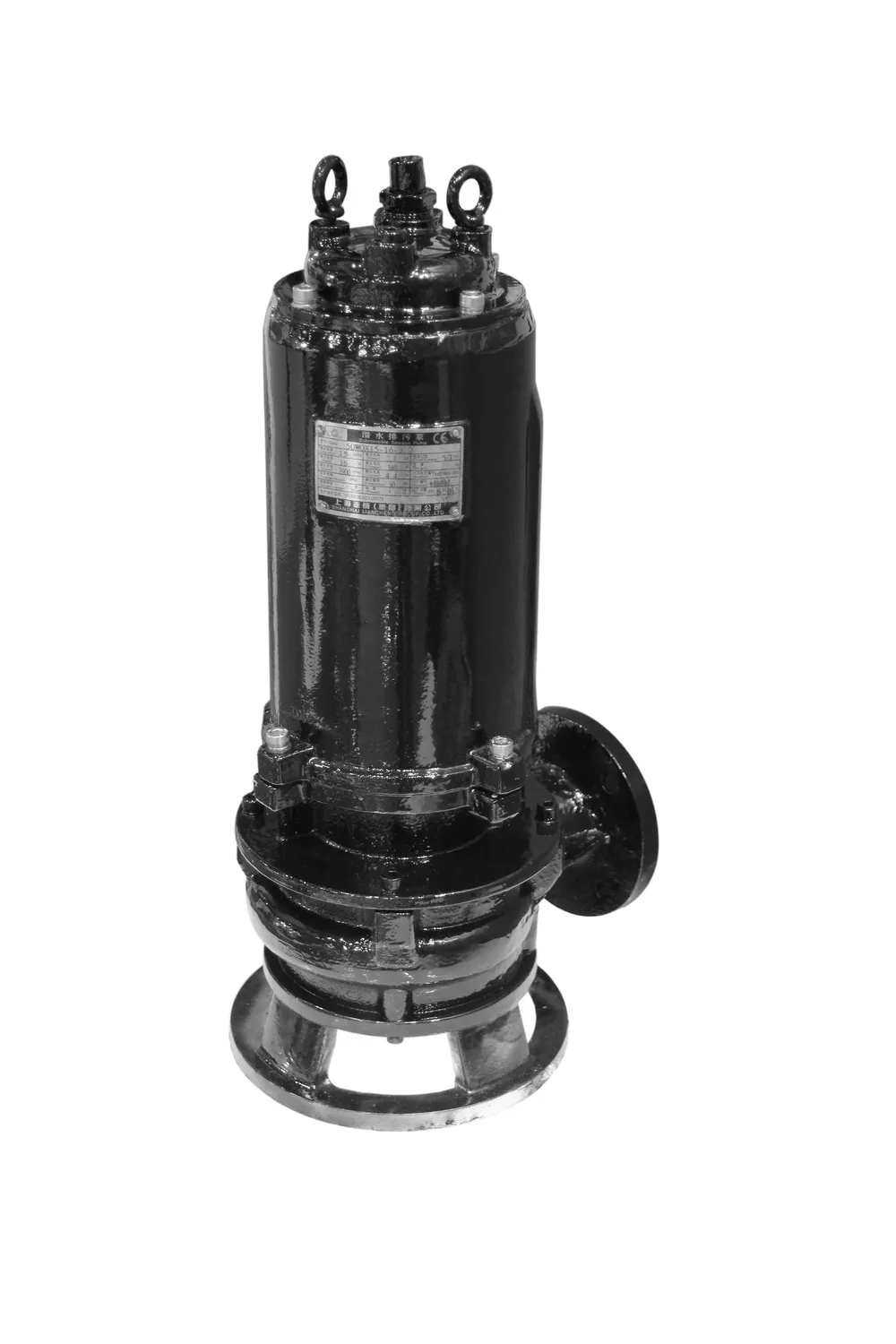
Submersible sewage pumps play a critical role in waste management and have a significant impact on the environment. Here's a look at their role and the environmental considerations associated with their use.
Submersible sewage pumps are essential in managing and treating wastewater. They transport sewage from residential, commercial, and industrial sources to sewage treatment facilities. Here, the waste is treated and cleaned before it is released back into the environment, thereby preventing contamination of water sources, soil, and ecosystems.
Furthermore, these pumps help in the efficient operation of septic systems and sewage treatment plants, contributing to effective waste management and sanitation. This not only maintains public health but also supports environmental health by preventing the spread of harmful pollutants.
While submersible sewage pumps are beneficial for the environment, it's important to consider certain environmental factors when using them:
1. Energy Efficiency: Pumps should be energy-efficient to minimize their carbon footprint. Selecting a pump with the right capacity and power for the task can help achieve this. Furthermore, regular maintenance can ensure that the pump operates efficiently and uses less energy.
2. Noise and Vibration: Pumps should be designed and installed to minimize noise and vibration, which can disturb local wildlife and humans.
3. Durability and Lifespan: Pumps should be durable and have a long lifespan to reduce the need for replacement and the associated environmental impact of manufacturing and disposing of pumps.
4. Responsible Manufacturing: Choose pumps from manufacturers who follow sustainable and responsible manufacturing practices. The Liancheng Group, a leading pump manufacturer, is committed to environmentally responsible practices, offering durable, energy-efficient pumps that are designed for long-term use.
The world of submersible sewage pumps is not static. It's an industry characterized by continuous innovation and technological advancement, and the future holds exciting prospects.
There have been several technological advancements in the design and operation of submersible sewage pumps that have significantly improved their performance and efficiency:
1. Improved Materials: Modern pumps use more durable and corrosion-resistant materials, enhancing their ability to withstand harsh sewage environments and prolonging their lifespan.
2. Energy-Efficient Motors: Advances in motor technology have resulted in more energy-efficient pumps. This not only reduces energy consumption but also minimizes the pump's carbon footprint.
3. Smart Technology: Integration of smart technology has allowed for real-time monitoring and control of pump operation. Pumps can now be connected to a central control system that can monitor performance, detect faults, and even control pump operation remotely.
4. Enhanced Design: Innovations in hydraulic and mechanical design have resulted in pumps that are more efficient, reliable, and capable of handling larger volumes of sewage and solid waste.
Companies like the Liancheng Group are at the forefront of these innovations, integrating advanced technology and design principles into their pumps to deliver superior performance and reliability.
The future of submersible sewage pumps looks promising, with several trends and predictions suggesting further advancements:
1. Increased Automation: We can expect to see more automated systems for monitoring and controlling pump operation. This could include advanced AI systems that can predict and prevent failures before they occur.
2. Sustainability: As environmental sustainability becomes increasingly important, we can expect to see more energy-efficient pumps and sustainable manufacturing practices.
3. Advanced Materials: The development of even more durable and corrosion-resistant materials could further enhance the lifespan and reliability of pumps.
4. Customization: As different applications have specific requirements, there may be an increase in customized pump solutions designed to meet these unique needs.
Submersible sewage pumps are a vital component in our modern infrastructure. From waste management to environmental conservation, their role is undeniable. As we continue to innovate and strive for more sustainable solutions, the importance of these pumps will only increase. When it comes to quality and durability in submersible sewage pumps, Liancheng Group stands at the forefront. As one of the leading submersible sewage pump manufacturers, we are committed to delivering superior quality products that meet the unique needs of our customers. Visit our website liancheng-pump.com to explore our range of products and learn more about our commitment to excellence and sustainability in pump technology.
Read More:
Top 10 Submersible Pump Manufacturers in China 2023
.png)

